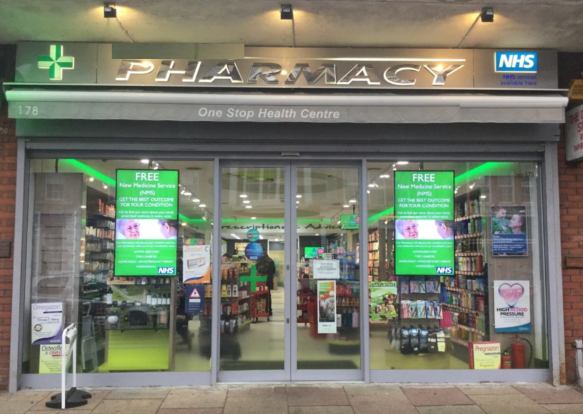The historical different roles within a community pharmacy team
The website NHS Pharmacy Roles reminds us of the different roles within a Pharmacy setting but when looking specifically at the community pharmacy setting the website News Medical Community Pharmacy is a good starting point.
Community pharmacists were known in the past as chemists. Like GPs, community pharmacists are part of the NHS family. Every day about 1.6 million people visit a pharmacy in England. Also known as retail pharmacy, is the most common type of pharmacy that allows the public access to their medications and advice about their health. It is the healthcare facility that is responsible for the provision of pharmaceutical service to a specific community group or region.
Community pharmacies are situated in high street locations, in neighbourhood centres, in supermarkets and in the heart of the most deprived communities. Many are open long hours when other health care professionals are unavailable. There are several different types and sizes of community pharmacies, ranging from the large chains with shops on every High Street or in edge of town supermarkets, to small individually owned pharmacies in small communities, in the suburbs and often in deprived areas or rural settings.
Most community pharmacies historically were a commercial store with a combination of toiletries, medicinal goods only available with a prescription and those that could be purchased over the counter.
Community pharmacists are considered to be the most accessible health professional to the public, as they are available to provide personalised advice about health and medicine on a walk-in basis, without the need for an appointment. The website News Medical Community Pharmacy reminds us that 89% of the population in the United Kingdom can access a community pharmacy within a 20-minute walk.
The traditional role of the community pharmacist as the healthcare professional who dispenses prescriptions written by doctors has changed. In recent years community pharmacists have been developing clinical services in addition to the traditional dispensing role to allow better integration and team working with the rest of the NHS.
Although all roles are still relevant today, with enhanced roles, historically the community pharmacy team would be made up of a combination of different team members but each with different roles.
- Pharmacy Support Staff have had many different job titles over the years including titles such as Counter Staff, Counter Assistants, Pharmacy Support Staff, Dispensers and Assistant Technical Officers (ATO's) however there was always similarity between their roles. A non-exclusive list of their various job roles included.
- Answering questions from customers face-to-face and on the phone
- Completing relevant pharmacy paperwork
- Dispensing medicines to customers once the pharmacist has fulfilled them
- Ensure the pharmacy is compliant with relevant regulations and pharmacy policies. Namely, by keeping an eye on the prescription filling process
- Liaising with healthcare providers
- Maintain electronic patient information
- Maintaining stock lists and ordering items as required
- Maintaining drug stock under the pharmacist’s supervision
- Ordering pharmacy items
- Packaging prescriptions
- Passing prescriptions to the pharmacist to fulfil
- Preparing billing information for medications, where relevant
- Making labels for prescription packages
- Referring customers to the pharmacist for medical advice
- Selling over-the-counter medicines
- Stocking pharmacy shelves
- Taking in deliveries
- Using a cash register
- Pharmacy Technicians roles predominantly used to cover the same roles as Pharmacy Support Staff but would also do roles such as:
- Providing safe and effective pharmacy services.
- Supplying medicines and medical devices to patients, whether on prescription or over the counter and providing information on symptoms and products.
- Achieving the best outcomes through a patient’s medicines.
- Assembling and accuracy checking medicines for prescriptions.
- Providing information to patients, carers and other members of the healthcare team.
- Managing areas of medicines supply in roles such as store managers.
- Supervising and training other pharmacy staff.
- Responding to patients’ and customers’ questions both face to face and over the phone.
- Reading prescriptions, labelling and dispensing prescribed medicines including compliance aids.
- Stock procurement and control including audits and resolving queries with wholesalers.
- Referring problems or queries to the pharmacist.
- Receiving and processing electronic prescriptions and communicating with GP surgeries to resolve queries
- Supporting and promoting public health initiatives
- Building relationships within the local community, GP practices, care homes, primary care network pharmacists and other pharmacy technicians.
- Keeping up to date with professional responsibilities and CPD requirements
- Supervising and training other pharmacy staff such as pre-registration pharmacy technicians.
- Pharmacists traditionally managed and ran the business, offered clinical advice, clinically screened prescriptions for accuracy, checked the prescription before handing out and counselled patients on their medicines.





